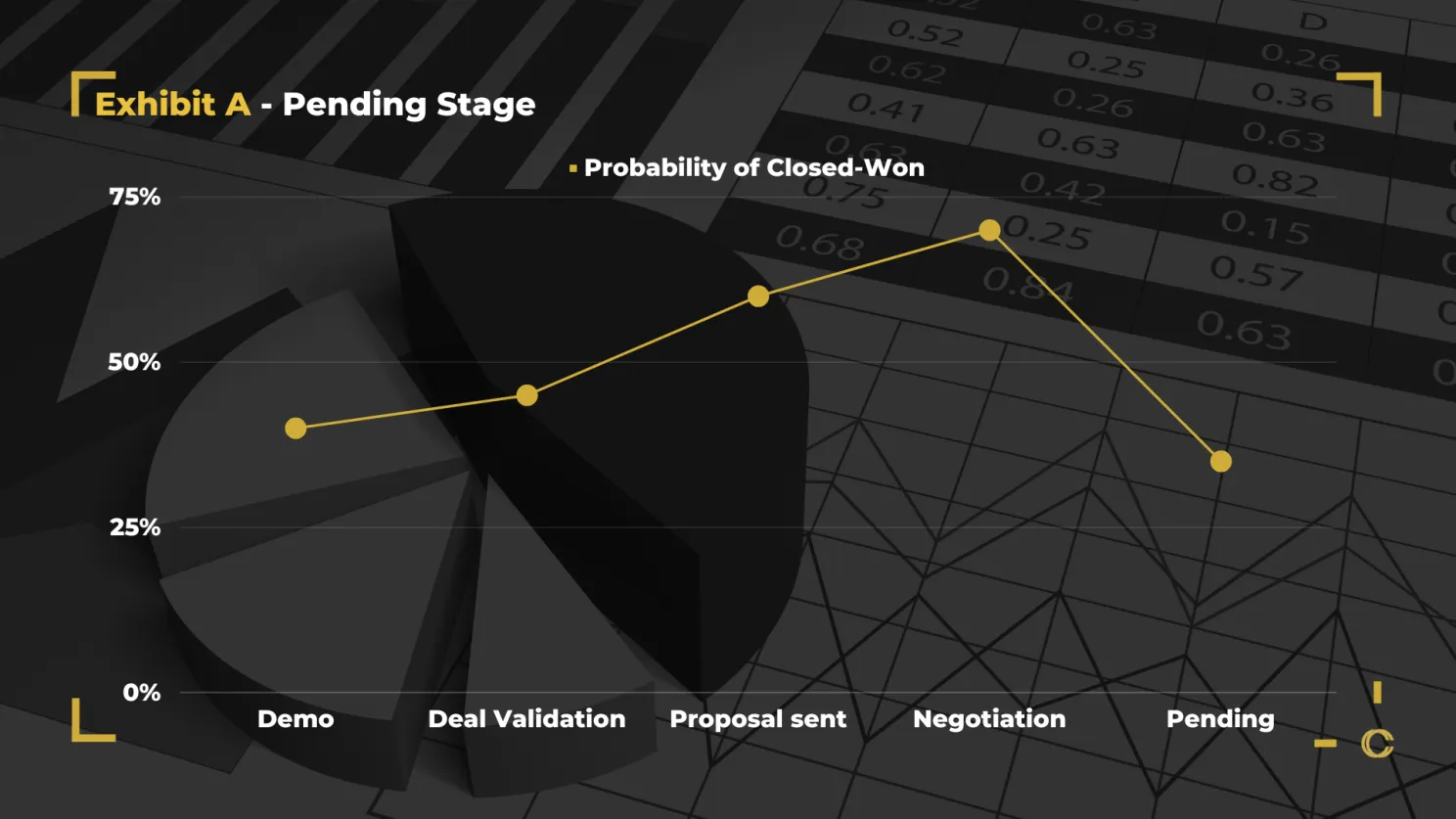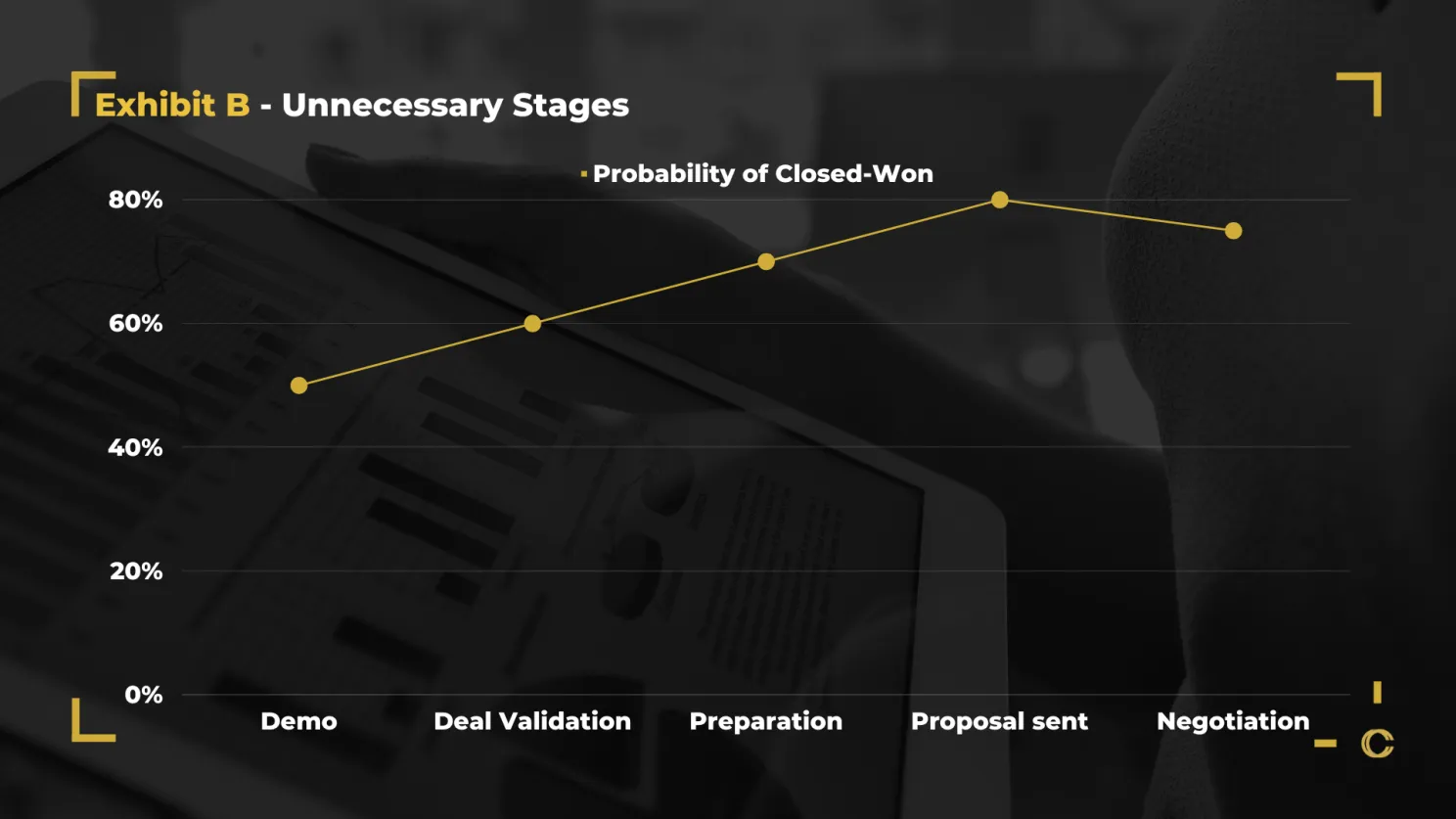.webp)

.gif)

Do you know the feeling of looking at a weather forecast and immediately doubting whether the prediction will be accurate? That's exactly how many growth executives feel when their sales forecasts are not reliable and accurate. To pursue long-term growth plans and make data-driven decisions regarding scaling, hiring, and pricing, you must hit the nail on the head with your forecasts. This is an absolute prerequisite for growth and the survival of your company.
But don't worry. Today, we will unveil the fog surrounding your pipeline forecasting accuracy. Since we often observe our clients' RevOps managers and growth leaders inadvertently undermining their forecasts, we have prepared three simple and easily implementable tips for more accurate forecasts:
The Customer Journey (CJ) is the backbone of your Customer Relationship Management (CRM) and lays the foundation for successful pipeline forecasting.
Each phase of your CJ should tell a clear story. When you look at deals/opportunities in a particular phase, you should be able to understand why they are there without much research effort.
In each phase of the customer journey, you should also expect an external action from the customer. After all, it is about the "Customer Journey." This also avoids having phases that even sales representatives ponder over their existence.
Do not ruin your data by adding phases like "Pending" or "On Hold", they should be avoided permanently.
Instead, you should mark these offers/opportunities with an appropriate reason for loss as "Closed Lost." Otherwise, they could remain in the "Pending" and "On Hold" phases indefinitely, affecting the data analysis of the customer journey and denying you to see a proper trend.
I have 3 exhibits to visualise this for you:



Many Forecast Managers mistakenly use arbitrary numbers or rely on benchmark values for analysis. However, these can vary significantly and should not be used.
To improve the accuracy of your pipeline forecasts, a thorough probability analysis is essential.
In each phase of a sales process, it is crucial to understand the likelihood of reaching the "Closed Won" phase. This probability is represented by percentages that refer to the chances of transitioning from the current phase to closing a deal.
To determine these probabilities, it is necessary to analyse a specific cohort of opportunities. However, it is vital that ALL deals go through ALL phases to establish a valid trend. The calculation of probabilities is done using the probability formula: P(A) = f / N. Here, P(A) represents the probability of a specific event (Event A), f is the number of ways this event can occur (frequency), and N is the total number of possible outcomes.
Careful deal qualification is crucial for your pipeline management. By thoroughly evaluating and filtering potential deals, you significantly improve the accuracy of your forecasts. Focus on the most promising opportunities to allocate your resources efficiently.
Furthermore, working in cohorts ensures that all team members know which deals are expected to close before the start of each month. This creates clarity, transparency, and enhances collaboration as everyone is working towards the same goal.
Depending on the volatility of your business, establish clear rules for adjusting expected closing dates. This preserves the integrity of your pipeline while allowing flexibility to adapt to changes. By analysing historical adjustments and incorporating validation rules and phase dependencies into the sales process, you will gain a better understanding of your pipeline and fully leverage the potential of your pipeline management.
Even though it may initially sound like a lot of work, these adjustments are not rocket science. No organisation should accept that pipeline forecasts are "simply difficult." By avoiding the mentioned mistakes and implementing the presented solutions in a structured manner, it is possible for anyone to design the forecasting process to generate reliable predictions.
Presenting our distinguished clientele! We collaborate closely with visionary B2B tech and software companies, intricately shaping their comprehensive Revenue Architecture. Take a look at who we have already served.

Explore our captivating customer success
stories here.


























































































You have questions? Our Founder and Managing
Partner Michael is looking forward to hearing from
you.